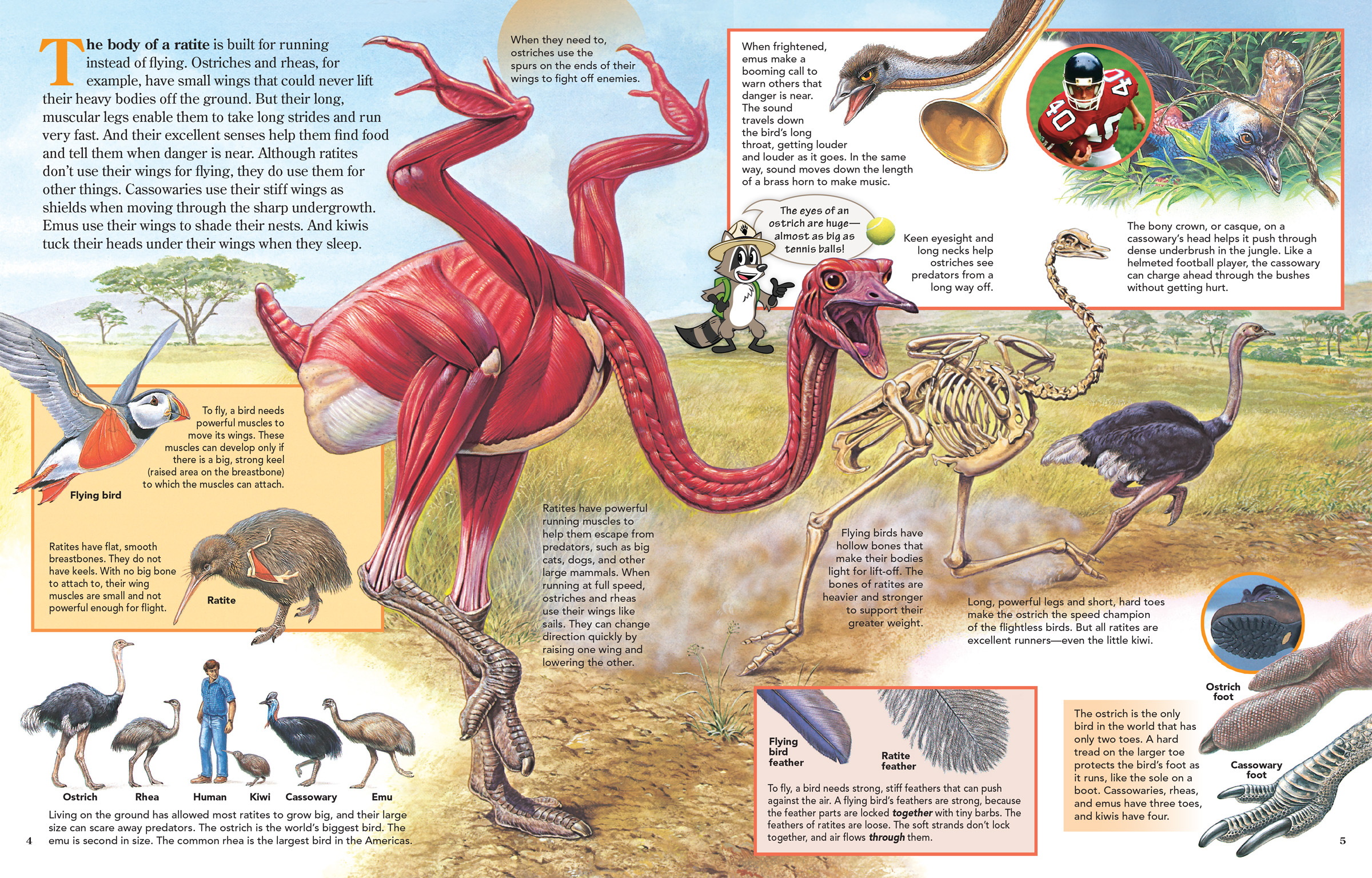
The Body of a Ratite
ByThe body of a ratite is built for running instead of flying. Ostriches and rheas, for example, have small wings that could never lift their heavy bodies off the ground. But their long, muscular legs enable them to take long strides and run very fast. And their excellent senses help them find food and tell them when danger is near. Although ratites don’t use their wings for flying, they do use them for other things. Cassowaries use their stiff wings as shields when moving through the sharp undergrowth. Emus use their wings to shade their nests. And kiwis tuck their heads under their wings when they sleep.
To fly, a bird needs powerful muscles to move its wings. These muscles can develop only if there is a big, strong keel (raised area on the breastbone) to which the muscles can attach.
Ratites have flat, smooth breastbones. They do not have keels. With no big bone to attach to, their wing muscles are small and not powerful enough for flight.
When they need to, ostriches use the spurs on the ends of their wings to fight off enemies.
Ratites have powerful running muscles to help them escape from predators, such as big cats, dogs, and other large mammals. When running at full speed, ostriches and rheas use their wings like sails. They can change direction quickly by raising one wing and lowering the other.

Living on the ground has allowed most ratites to grow big, and their large size can scare away predators. The ostrich is the world’s biggest bird. The emu is second in size. The common rhea is the largest bird in the Americas.
When frightened, emus make a booming call to warn others that danger is near. The sound travels down the bird’s long throat, getting louder and louder as it goes. In the same way, sound moves down the length of a brass horn to make music.
The eyes of an ostrich are huge—almost as big as tennis balls! Keen eyesight and long necks help ostriches see predators from a long way off.
The bony crown, or casque, on a cassowary’s head helps it push through dense underbrush in the jungle. Like a helmeted football player, the cassowary can charge ahead through the bushes without getting hurt.
Flying birds have hollow bones that make their bodies light for lift-off. The bones of ratites are heavier and stronger to support their greater weight.
Long, powerful legs and short, hard toes make the ostrich the speed champion of the flightless birds. But all ratites are excellent runners—even the little kiwi.
To fly, a bird needs strong, stiff feathers that can push against the air. A flying bird’s feathers are strong, because the feather parts are locked together with tiny barbs. The feathers of ratites are loose. The soft strands don’t lock together, and air flows through them.
The ostrich is the only bird in the world that has only two toes. A hard tread on the larger toe protects the bird’s foot as it runs, like the sole on a boot. Cassowaries, rheas, and emus have three toes, and kiwis have four.

